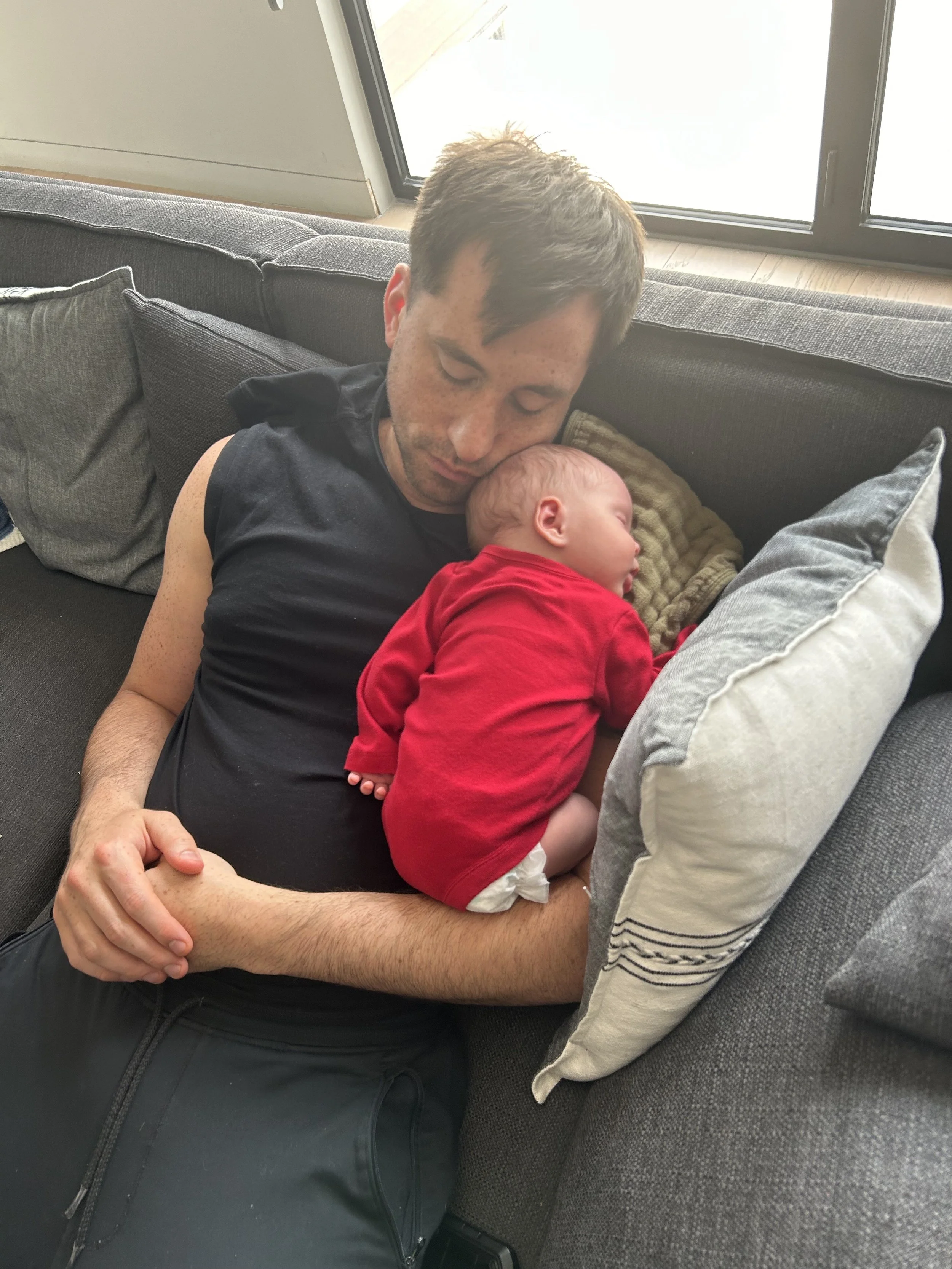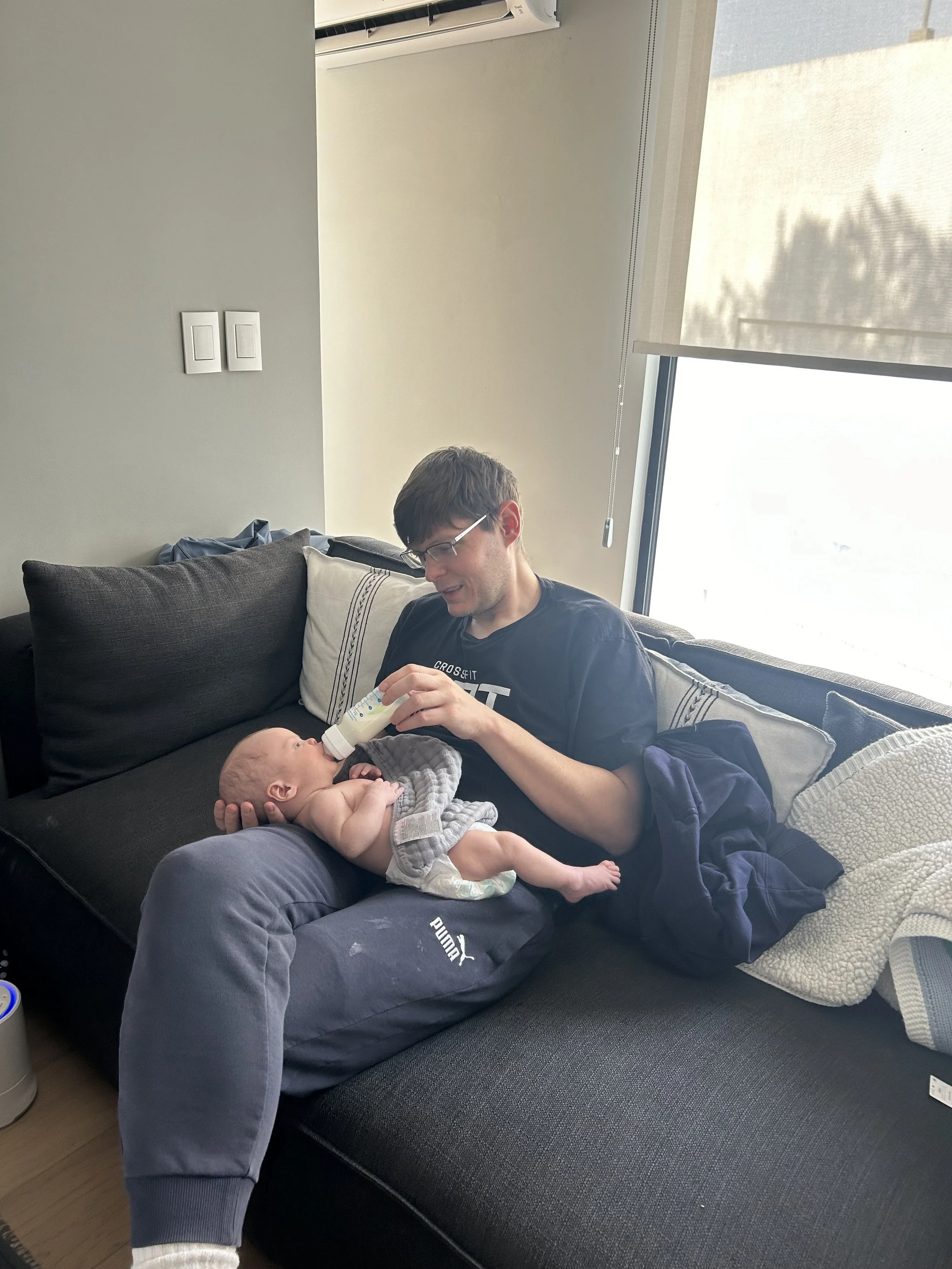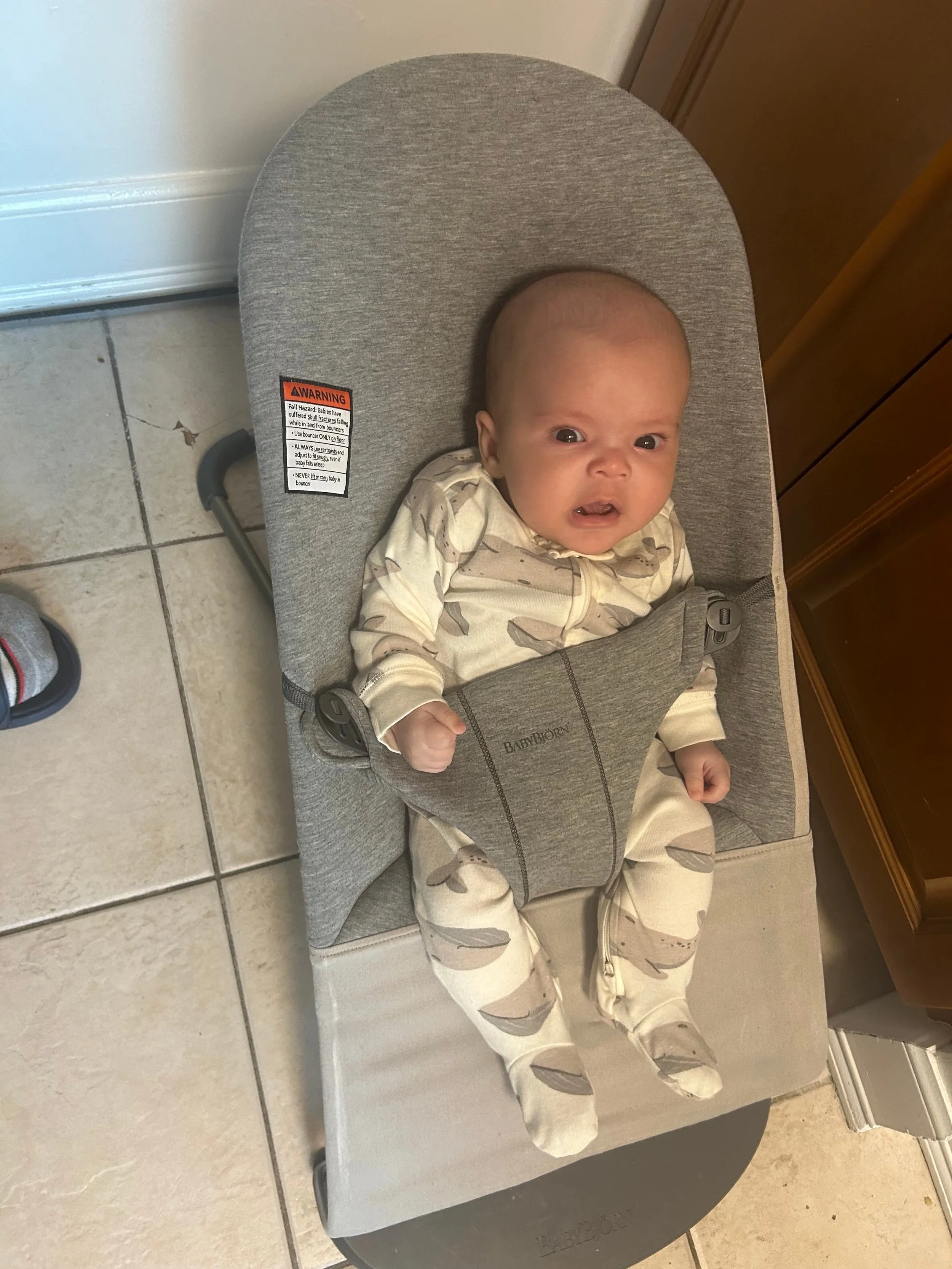Surrogacy Journeys: From the United States to Mexico
A happy baby Harold
Overview:
Family Location: New York, USA
Journey Country: Mexico
Egg Donation: Global Egg Donors
IVF Clinic: Reprovida
Surrogacy Agency: Surrogacy Mexico
Surrogacy Coordinator: Sensible Surrogacy
Legal Firm: Altamirano
Estimated Timeline: December 2022 to January 2024
Estimated Cost (IVF + surrogacy + legal + travel): $85,000 - $100,000
Introduction
While the United States is still the preeminent location for IVF and surrogacy, the high cost for a journey in the U.S. is leading more and more intended parents (IPs) to pursue family building in other countries. I have previously written about this trend and highlighted the significant cost differential between a single U.S. journey (~$225,000) and a comparable international journey in Albania, Cyprus, Georgia, Mexico, or Ukraine (~$66,000).
Just because a journey does not take place in the U.S., does not mean that isn’t an ethical journey. I have previously written some guidelines that could empower ex-U.S. journeys to be on par with those in the United States, but as an intended dad on my first journey in the U.S., I don’t have personal experience with these international family building options.
In a new series of articles for BabyMoon Family, I want to profile queer dads who have embarked on IVF and surrogacy outside the U.S. Hopefully, this can be a resource for other IPs to learn about options and best prepare to embark on a journey that is best for them.
One of the growing destinations for assisted reproduction is Mexico. In 2022, there were approximately 30 surrogacy agencies operating in the country, double the number in 2020 (1). One agency estimated that between 2022 and 2023, they had an increase of 30% in their surrogacy arrangements, largely driven by the war in Ukraine (2).
Journey Interview
Nap time with David and Harold
Scott Blair, an attorney in New York City, was kind enough to talk with me about his and his husband’s journey in Mexico. Scott met his husband, David, an engineer, in 2018. They were married in 2024, and they always knew they wanted to have children. They considered adoption, but like many queer men, they heard from friends about the challenges and often unsuccessful outcomes of this path, so they decided to pursue IVF and surrogacy.
Scott and his husband considered several locations for their journey. ‘The US is the best country for surrogacy worldwide,’ Scott stated, but the $200,000 or more cost was discouraging. David is from Ukraine, but given that same-sex couples are not permitted to pursue surrogacy in Ukraine as well as the ongoing war, this was not a consideration. ‘People come from Canada to America to do surrogacy,’ Scott said, alluding to the long wait times to match with a gestational carrier (GC) in Canada. Argentina has recently banned international surrogacy, so that wasn’t an option. They briefly thought about Colombia, but they didn’t know enough about the country to feel comfortable.
Scott had done some work in Mexico City, and the city had a lot of modern qualities that resonated with the couple. They researched online, and found great information and support in a Surrogacy in Mexico Facebook group. This led them to pursue Mexico for their journey.
Overall, the journey in Mexico went smoothly. Scott and his husband had contracted with a surrogacy coordinator/adviser from a company called Sensible Surrogacy. This person’s role was to help the couple navigate the journey in Mexico, but Scott transparently shared that he would not recommend this to other IPs. The person made multiple errors such as not including his husband on emails, getting their names wrong, sharing incorrect timelines, and missing calls, and this all added up to a negative experience that was unhelpful and caused unnecessary stress.
From a medical and legal perspective, Scott and his husband had great experiences. All contracting and legal documentation was in Spanish and English, and Scott wholeheartedly recommended the law firm they used, Altamirano. The couple worked with a third party egg donation program, Global Egg Donors, which they shared was absolutely great to work with. This program provided the couple with a larger selection of donors. It also allowed them to pursue a more open and transparent donation because Mexican law requires egg donors to be anonymous. Once selected, their egg donor was flown from the U.S. to Mexico City for her egg retrieval. The private hospital where their son, Harold, was born provided exceptional care. Shortly before their son’s birth, an ultrasound revealed Harold had a nuchal chord (when the umbilical cord is wrapped around the baby’s neck in utero). This led to a c-section for the delivery, and Scott - a former EMT - was in the operating room and said the experience was calm and professional. Harold was born with perfect Apgar scores, which is the way health professionals evaluate the health of all newborns at 1 and 5 minutes after birth. The couple paid for the medical care out of pocket. They were able to place Harold on their U.S. health insurance policy after he was born, which would have provided international emergency coverage if needed.
From the perspective of the GC and their relationship, Scott admitted this was less than ideal. The agency, Surrogacy Mexico, assigned a social worker to the GC and said that they like to maintain a distance or compartmentalization between the IPs and GC during the journey. Despite this, Scott and his husband asked the agency to share the contact information for their GC. While the agency did say they would share the GC’s phone number, they never followed up on this. Scott and his husband were able to join medical appointments remotely, but they were only able to have infrequent communication through the agency with their GC and her family before the birth of their son Harold. Afterwards, they were able to establish direct contact and now communicate frequently with their GC, and she has even gotten a tattoo of Harold, demonstrating how significant the process was for her. For Scott, who has some Spanish, communication with the GC and her family was relatively easy. For David, who does not speak Spanish, this was a limitation for the journey overall, and Scott did mention that a journey in Mexico would be challenging if neither IP spoke Spanish.
Harold’s feeding time with Scott
There were some surprising benefits to the journey for Scott and his new family. The weather in Mexico City in January was significantly nicer than the freezing New York City winter. Also, given the lower cost for healthcare services, the couple were able to spend about $100 a night to have a night nurse. This allowed the fathers to sleep and have the piece of mind that if something did go wrong, there was a healthcare professional in the house.
One aspect that Scott transparently wanted to share with other IPs is the exit process of leaving Mexico with your newborn. He summarizes the interactions with the U.S. Embassy and Department of State with the following:
‘The Embassy sees your child as a policy failure, and that was before Trump came into office. [...] If you get into trouble, the State Department will not help you. We know of a couple whose child had sepsis and the Embassy did not help them take the child home to an American hospital.’
Scott and David were able to leave Mexico with Harold having an emergency passport about 50 days after his birth. However, this required extensive interactions and assertive communication from the new parents.
The U.S. Embassy in Mexico has a dedicated website for surrogacy (3). Crucially, the Embassy will not meet with you or consider a passport for your child until you have a birth certificate. Like most queer fathers, Scott and David wanted to both be on their child’s birth certificate. However, this meant the birth certificate took additional time to be issued. The process could be slightly faster if new parents were to leave the GC’s name on the birth certificate with one of the fathers. However, if something were to happen to the child, the non-recognized parent may have some issues with medical decision-making for their own child. This is why most queer dads want to be on the birth certificate, as well as the fact that it’s an official document for the parents of the child, so it should reflect the actual, intended parents.
In addition to the birth certificate, the Embassy also states that a DNA test of parentage is required from a parent who contributed genetically to the child. Through his repeated discussions with the Embassy and provision of documentation surrounding Harold’s birth, Scott was able to get this DNA test waived, but this is often required for other new parents. When it is required, the Embassy will only permit you to take the DNA test after proving a birth certificate, and the test itself can take up to four weeks to result.
Even with the GCs name removed from the birth certificate, they still had to get the GC to sign and notarize the government form DS-3053 to have the passport issued (4).
This adds to the frustration of the U.S. Embassy and their instructions for issuing a passport. While they have guidelines and checklists on their website for the required documentation, their requirements were not consistent or aligned to any legitimate regulations.
Harold’s response to the Embassy’s rules
During his frustration with the Embassy, Scott reached out to several members of Congress, some of which were more helpful than others. He shared that the offices of Representative Nadler and Representative Pallone were responsive and helpful in pressuring the Embassy to issue the emergency passport, but Senator Schumer’s office was terrible.
Scott was also encouraged by lawyer friends to reach out to the LGBT Envoy for the State Department (5). However, Jessica Sterns, who was in this role until January 20, 2025, said it was not her role to advocate for him or his son but rather for LGBT affairs abroad (6). Interestingly, the Trump government has not appointed a new LGBT Envoy, and given the erasure of government websites through the new administration’s refusal to support diversity, equity, and inclusion (DEI), it is likely that this role will never be filled. Websites that shared news about the previous LGBT Envoy’s work have already been removed (7).
Finally, with the birth certificate and form DS-3053, Scott and his husband were finally able to get Harold an emergency passport. This approval was helped by the fact that Harold needed vaccinations that were currently not available in Mexico. Overall, Scott shared that the documentation and exit process through the U.S. Embassy was by far the most negative aspect of the entire journey in Mexico.
Relaxing at home.
Final Thoughts
With dads and Harold safe, healthy, and fully vaccinated in New York City, Scott had a few final thoughts to share with other IPs considering a journey in Mexico:
Recommendations:
Yes to the law firm they used, Altamirano.
No to the surrogacy coordinator from Sensible Surrogacy.
If he did a sibling journey in Mexico, he would want more communication with the GC earlier in the pregnancy.
He stated that ‘nothing about the country or the process gave me concern.’
He had a warning for IPs: ‘Be prepared you will be there for an indeterminate amount of time, and if anything goes wrong, the U.S. Embassy will not help you.’
The couple saved over $100,000, and the medical care did not give rise to concerns.
Join the Surrogacy in Mexico Facebook group, and align with other IPs who are on the same journey timeline so you can share the experience and learnings.
Get and expect to use WhatsApp. It was Scott & David’s primary form of communication with just about everyone: their lawyers, the agency, doctors, and the GC.
Every journey is different. This is Scott, David, and Harold’s story between the U.S. and Mexico. If you have a story that you’d like to share with BabyMoon Family, please reach out to bryan@babymoonfamily.com.
References:





